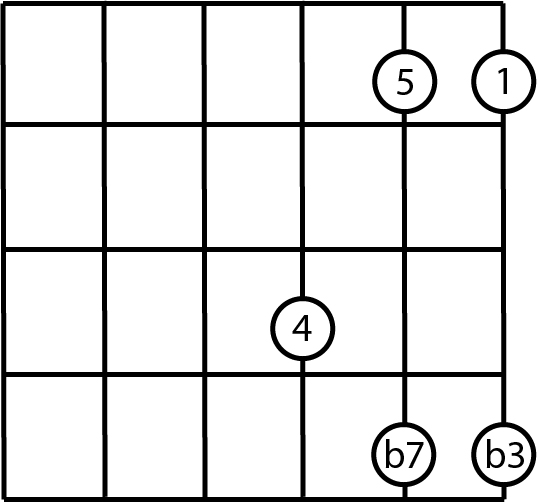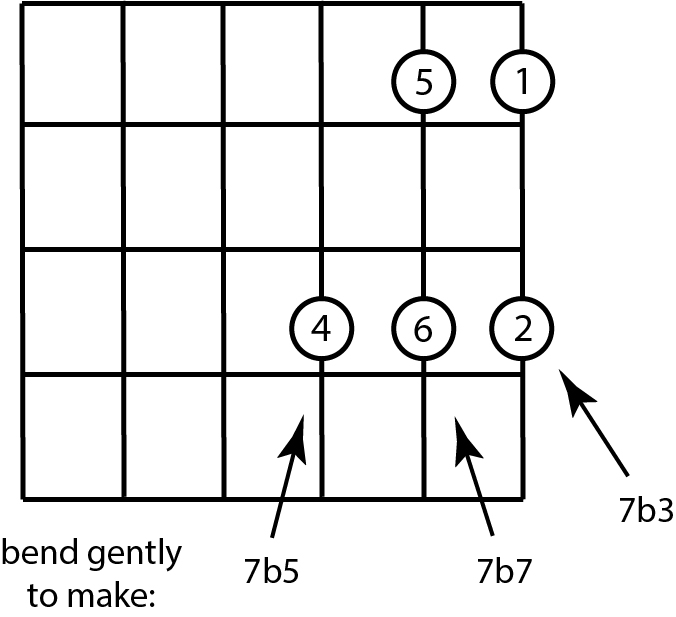The Septimal Minor Third
At the very end of the chorus, Be Love showcases one of my favorite notes, the 7b3.
Most of the notes of the inner lattice can be approximated on the piano, but not the septimal minor third. It’s in between the keys. Blues pianists can evoke it by trilling between 2 and b3, but only variable-pitch instruments can actually hit the note.
Here it is in context:
It’s fun to sing this part of the song, stretching out that septimal note and tasting its flavor.
The passage illustrates the harmonic function of the note. It’s the septimal flatted seventh of the 4, also called the harmonic seventh or barbershop seventh. This is a beautifully consonant note, a great addition to a major chord. It’s generated by multiplying by seven. I use it here as a harmonic seventh over the IV.
Relative to the 1, the 7b3 is a compound note. To get there, you divide by 3, and then multiply by 7. The ratio is 7/6, octave reduced. The pitch is 267 cents, between the 2 and the b3. Here it is on the scale. The colored notes are in just intonation, the black ones are in equal temperament.
Over a I chord, the 7b3 sounds bluesy, restless, gutsy — it’s the insistent melody note in Taking Care of Business. It’s at the heart of the guitar riff in Dizzy Miss Lizzy (George often bends it up to the major third), it’s Jagger’s haunting first “ooooh” of Gimme Shelter. Gimme Shelter
The Stones’ music is a feast of 7b3’s. So is Led Zeppelin’s. These septimal notes are found everywhere the blues has left its impression.
There’s an old question: why do the minor melody notes of the blues sound good over major chords? The web is full of discussions as to why this is so.
I think it’s because the blue minor third is not the b3, but the 7b3. The regular minor third is a reciprocal third, and harmonically it doesn’t fit with major chords — it’s in a different part of the lattice.
But the 7b3 is an overtonal 7th, built on the 4, generated by multiplication. The major notes are made by multiplying by 5. Times 5 and times 7 go together very well. The harmonic seventh chord is a thing of beauty.
There’s an implication for blues guitar. You can’t play this note in the classic minor pentatonic blues box. You can play a b3 (bend it a little to tune it up), or a 3 (bend it harder), but not a 7b3, it’s flat of the b3, and you can’t bend down.
You can play a 7b3 by grabbing the 2, one fret below, and gently bending up to it. The following box works great for septimal notes. They’re all laid out under the ring finger. Bend them by less than a half step.
This box makes it easy to play the classic bit of melody, 7b3 – 2 – 1. All three songs I linked to earlier have this melody in their bones — BTO, the Stones, the Beatles. It’s everywhere. Here it is in Be Love.
Next: Mixolydian Mode


